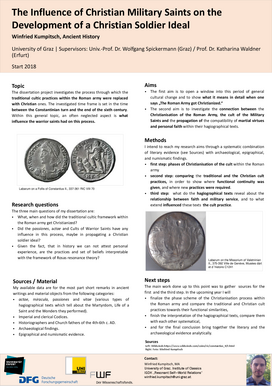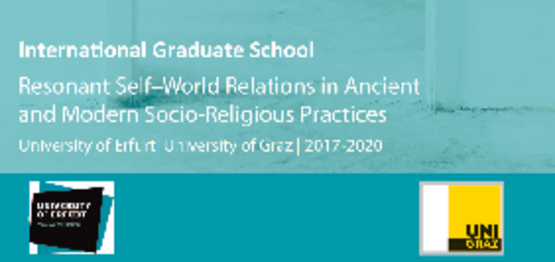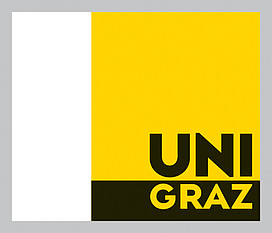Winfried Kumpitsch
The Influence of Christian Military Saints on the Development of a Christian Soldier Ideal
The dissertation project, which has developed from my master thesis “Christen im römischen Heer“, investigates, on basis of the theory of resonance by Hartmut Rosa, to what degree in the time between the Constantinian turn and the 6th. Century AD the necessity arose to replace the old resonance axes with Christian ones within the Roman military. In particular my research questions whether early Christian martyrdom reports or cults of the saints had an influence on the development of a Christian soldier ideal.
With the Milan Tolerance Agreement of Constanine I. and Licinius 313 AD the Christian religion became accepted and a change of values within the Roman empire started. In the following centuries the Christian religion spread within the empire, and received a legislative backup in 380 AD with the declaration as state religion by Theodosius I.. Yet the old cults were still practiced within the Roman military, which raises the question how Christianity replaced the old resonance axes, which were responsible for the creation of loyality within the army and towards the Emperor, by new ones. It is possible that in this process the military martyrs had some influence as propagators of a Christian soldier ideal.
This seems possible, because in the biography of military saints we can detect different goals when characterizing the saints, e.g. Eucherius describes in the Passio Acaunensium St. Mauritius, the commander of the Thebean Legion not only with traditional virtues like courage and loyality, but also as well-read in the holy scriptures. On the other hand in his Vita Sancti Martini Sulpicius Severus characterizes the military service of Martin peaceful and more focused on prayer and ascetism. This, however, didn´t stop Chlodwig I. to make Martin the patron and battle helper of the Merowingians.
The scientific relevance is that when the resonance theory is successfully used, a window is opened into a time of an overall change of values.
Curriculum vitae
2012 - 2015 Bachelor Programme Ancient History and Classical Antiquities at the Karl-Franzens University of Graz (Rom und die Sklavenaufstände im 2. und 1. Jh. v. Chr.)
2015 - 2018 Master Programme Ancient History and Classical Antiquities at the Karl-Franzens University of Graz (Christen im römischen Heer)
2016 – Master Programme World Religions at the Karl-Franzens University of Graz, 2018 interrupted due to the Graduate School.
2018 - PhD Ancient History and Classical Antiquities in the International Graduate School „Resonant Self–World Relations in Ancient and Modern Socio-Religious Practices“ Max-Weber-Kolleg University of Erfurt and University of Graz





